Actualizado: November 9th 2016 at 17:29
Mistakes in texts and Photographs
In this annex called "Mistakes" we communicate errors that we have found in articles, texts and photographs.

Curtiss-Kirkham K-12 engine that appeared as K-6 in the first publications of a twentieth century prestigious yearbook. In later years it was corrected.

Also in the earlier mentioned prestigious publication, appears the LAWRANCE engine as LAWRENCE.
-This is why in the 2003 edition of "Aviation Engine A to Z" appeared the same engines under two different brands, though announcing doubts. Today it is cleared.
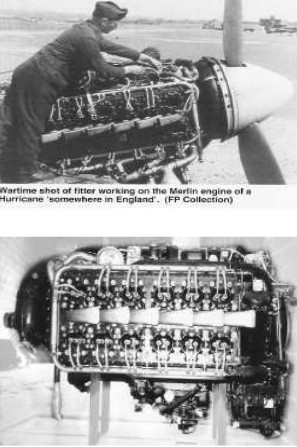
Even in the most prestigious magazines, engines are confused, as we see on the left that they say Merlin to a Napier Sabre. Always alert.
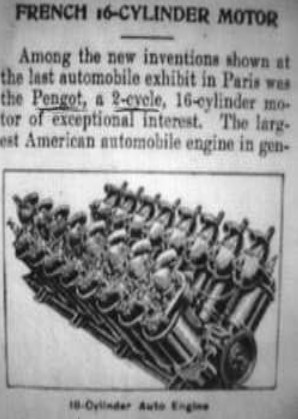
In the Popular Mechanics magazine from the 1910s's, appears this article of a two-stroke "Pengot" engine with 16 cylinders. automotive.
Accumulated errors?
We see clearly that it is the 16-cylinder Antoinette; It is a four-stroke engine and although it is possible that it was thought to be used in cars, it is known that its use was aeronautical and marine.
Not a "Pengot" (?), Nor a possible "Peugeot", as far as we know.
They are two coupled 8-cylinder Antoinette engines
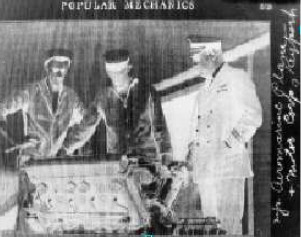
Like the previous engine, in the 1920's, they say that it is an "Aeromarine Airplane and Motor Co.," engine but we see clearly that this is a Hispano-Suiza 8-cylinder Vee engine (Possibly a Wright-Martin made under license).
Which is indicated by cylinders, cylinder head covers and the exhaust port distribution. (PiP)

On the "Encyclopaedia Britannica" website appears this picture of Louis Bleriot in which it is said that he crossed the English Channel with this XI on July 25th 1909. However this engine is a "V" with several cylinders. (Antoinette). (PiP)
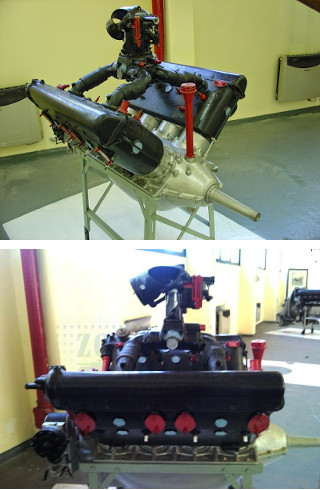
At the Aviation Museum in Morón, Argentina they present a Hispano-Suiza V8 with the carburetor upside down. It starts by mounting the four-port collector upside down. Then the carburetor is on top but is not able to work because it will be flooded as the level float is upside down.
It is several years in the same position without anyone to act.
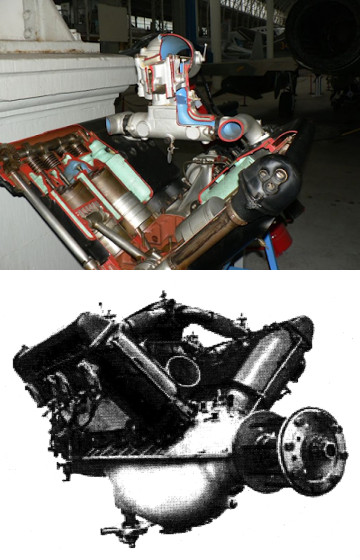
Engine in Brussels. Hispano-Suiza V8 with the carburetor upside down.
The carburetor is mounted at the underside of the manifold between the V formed by the two cylinder blocks, as showed in the lower picture.

Hispano-Suiza V8 in a museum in Prague with the carburetor inverted, on top, making it impossible to operate, apart from the fact that it does not fit within the cowling of an aircraft. It would exaggeratedly sick out from the top.
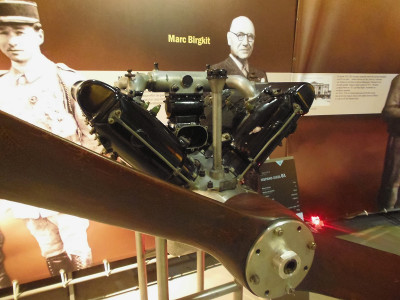
At the Safran Museum in Villaroche. The name of the engineer Mark Birkgit appears as Birgkit.
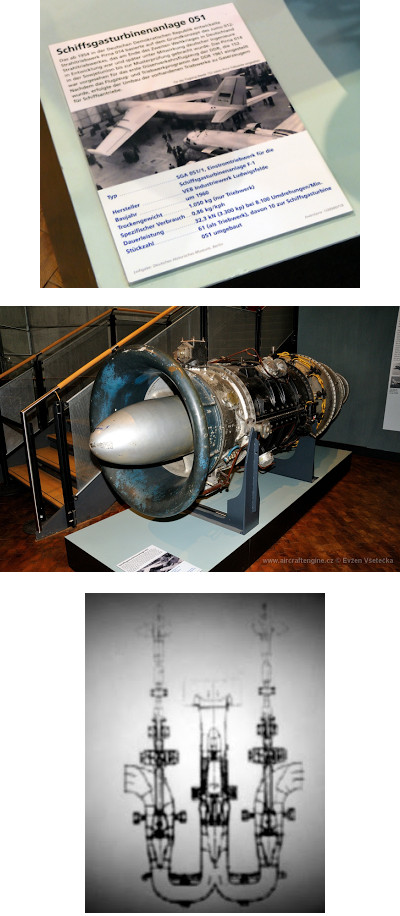
Misidentification Pirna 014 engine made in the DDR (East Germany). The engine has a hood air inlet, which is typical for the naval version. However it is assigned to the Baade 152 airplane -the one of the photo.
Actually it is the SGA-051 made by Pirna, not for an aircraft but for a torpedo boat.
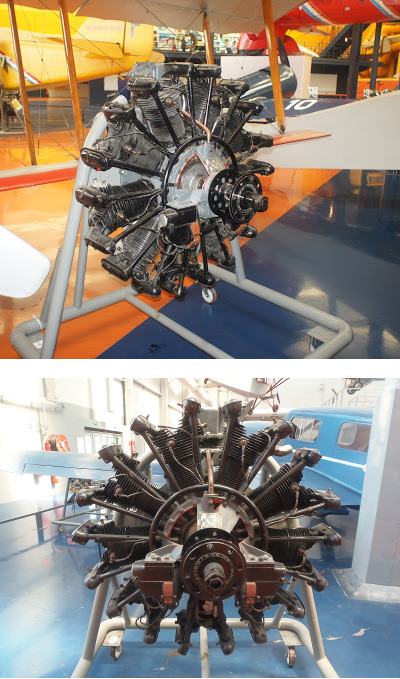
Engine upside down at the Le Bourget Air Museum in Paris
The magnets are inverted when they should be upright. It has the oil sump on the top.
As there are several inner sections to see it might well be to be able to have a good look at the inside. It could be intentional, but I do not think so. It seems to be an oversight. We who go to museums and know about engines see the slip. Those who do not understand do not notice.


